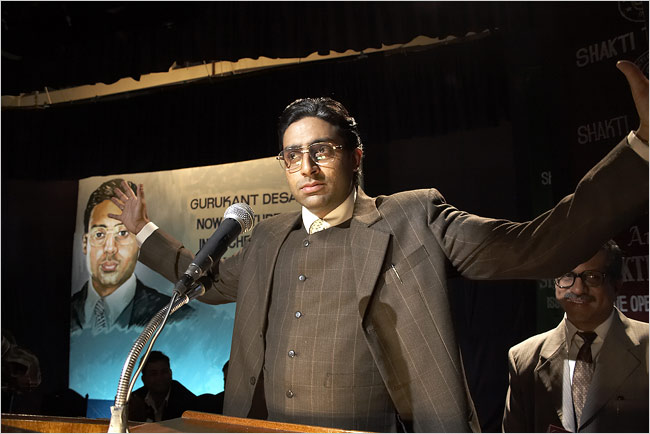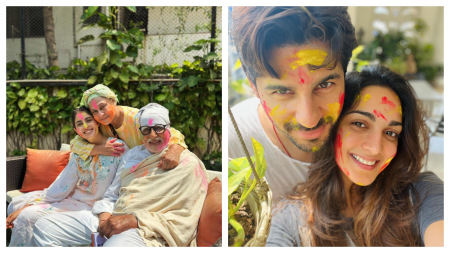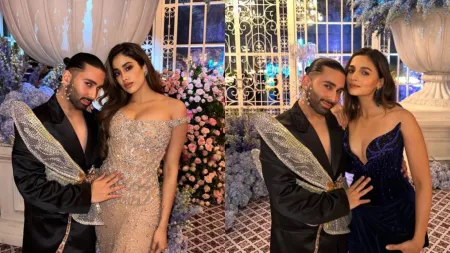- India
- International
The Man from Madras: Ahead of OK Jaanu, a short guide to Mani Ratnam’s powerful films
The visual poetry of Mani Ratnam’s cinema and why even though his movies straddle the social and political they conceal a hopeful, humane and romantic heart
 Aditya Roy Kapur and Shraddha Kapoor’s Ok Jaanu is a remake of Mani Ratnam’s hit film O Kadhal Kanmani starring Dulquer Salmaan Nithya Menen
Aditya Roy Kapur and Shraddha Kapoor’s Ok Jaanu is a remake of Mani Ratnam’s hit film O Kadhal Kanmani starring Dulquer Salmaan Nithya Menen
For many film buffs, the primary motivation for watching OK Jaanu, starring the Aashiqui 2 pair Aditya Roy Kapur and Shraddha Kapoor will be the fact that it’s a remake of Mani Ratnam’s 2015 Tamil hit O Kadhal Kanmani. The original, with Dulquer Salmaan and the peppy Nithya Menen in the lead, marked the return of vintage Ratnam after the much-derided Kadal and Raavan. OK Jaanu also happens to be Muzaffar Ali’s son Shaad Ali’s comeback. Despite being a full-fledged director in his own right, Ali continues to rehash Ratnam’s originals into Hindi. 2002’s Saathiya (Rani Mukerji and Vivek Oberoi) based on his mentor’s Alaipayuthey is another evidence.
WATCH VIDEO | Watch Jacqueline Fernandez And Sushant Singh Rajput Groove To Humma Humma
While Saathiya dealt with how dreamy-eyed romance mutates into a more realistic and practical beast after marriage, O Kadhal Kanmani is even younger in attitude. Unlike Saathiya, there’s no question of marriage in O Kadhal Kanmani because the young and ambitious protagonists find the hallowed institution out of sorts with their urban reality. Living-in holds greater appeal. Those of us who stay in major cities, the idea of couples living-in is neither novel nor radical. So, it’s not like Ratnam – lovingly called ‘Mani sir’ – is exploring something path-breaking. What’s commendable is in the way he marries intimate themes with contemporary touch. As a filmmaker, he is not afraid of social issues and trends most commercial directors would conveniently shun in favour of more conformist themes. Often ranked alongside other Tamil auteurs like K Balachander and Balu Mahendra, Ratnam’s films can be read as highly personal statements. He’s one of those rare filmmakers who make his point by operating very much within the commercial framework.
Any discussion about Ratnam mainly involves his Tamil body of work, overlooking the Hindi side of things. But Tamil cinema is indeed a good starting point to enter Mani Ratnam’s Madras. When he began in the 1980s, Ratnam was building on the works of a previous generation of Tamil filmmakers, but was equally influenced by filmmakers as culturally diverse as Guru Dutt and Akira Kurusawa. He arrived into the movies with a background in finance. Though his father was a film distributor he was reportedly kept away from cinema. It’s a fascinating dichotomy that while Ratnam was living a conventional life expected of good Tamil family boys of the time, the filmmaker in him veered towards rebellious and progressive themes. Right from the beginning, his films revealed a social and political undertone. However, the greatest force at play in a Mani Ratnam film was always interpersonal relationships and romance. His wife, actress Suhasini Maniratnam, once described him as a “chronic romantic.”
Also read: OK Jaanu movie review: Why do our young lovers sound so juvenile?

WATCH VIDEO | OK Jaanu Stars Shraddha Kapoor, Aditya Roy Kapur’s Candid Interview
A breakout film and Mani sir’s personal favourite, 1986’s Mouna Raagam follows the life of a woman torn between a haunting past and uncertain future. Played by Revathi, she is mourning the death of a lover while her family has packed her off into a loveless arranged marriage. The film raised questions of gender roles and the woman’s choice to opt out of an unhappy marriage. It announced the arrival of Ratnam as a sensitive director who knew a thing or two about the modern woman. His women were ahead of their times. As Baradwaj Rangan, critic and author of a book of conversation with the filmmaker, observed in an interview, “Mani Ratnam’s cinema had these very ordinary, salwar kameez- and sari-clad women, who were modern in their outlook, in the way they spoke, in the way they dealt with things. He showed that the traditional girl from Madras was not somebody with a ton of jasmine flowers in her well-oiled hair, but someone who was modern in subtle (and not just superficial) ways.”
Also read: Ok Jaanu box office collection day 4: Aditya Roy Kapur, Shraddha Kapoor film shows a dip
Meanwhile, Mouna Raagam was followed by Nayagan, an update on The Godfather with a searing portrayal by Kamal Haasan of the dreaded mafia kingpin Varadarajan Mudaliar. Ratnam also drew from Indian mythology, the result of which is such classics as Roja and Thalapathi – the latter being based on the story of Karna and Duryodhana from Mahabharata. Another highpoint from the 1990s is Anjali, an affecting story about a little girl’s mental illness and Iruvar that depicted the fictionalised life of the Tamil film personalities-turned-politicians, MGR and Karunanidhi. According to Rangan, Roja marked a shift from his sparer Madras movies (his banner is called Madras Talkies) to a national stage. By this, Mr Rangan obviously implies Ratnam’s switch to Hindi cinema.
This phase also yielded what critics called his “terrorism trilogy” with Roja, Bombay and Dil Se. “They weren’t planned as political films,” he once said. “It was a phase India was going through and these things affected me and found their way into my work. It was anguish, it was a cry.” The stark themes of these films found salve in A R Rahman’s hauntingly hopeful tunes. Music has always had a special place in a Mani Ratnam film. His passion for music, he pointed out in an interview, was inspired by the oral traditions of India. The legendary Ilaiyaraja made a successful team with Ratnam but as the latter kept moving closer to Bollywood, he needed new sounds for the modern audience. Ilaiyaraja had to make way for a young newcomer called A R Rahman. Rahman composed what many agree to be his finest work during that period. A love story set amidst Hindu-Muslim riots in Bombay, Ratnam’s Bombay was lyrical and persuasive but forceful. A compulsive worker, as Ratnam grew older his films started getting younger. For proof, look no further than Kannathil Muthamittal, Alaipayuthey and O Kadhal Kanmani.

Despite enjoying a long inning and producing an impressive body of work, most Bollywood fans seem to confine the Chennai-based Mani Ratnam’s work to either Guru starring the Bachchan couple (Abhishek and Aishwarya Rai) or Dil Se, just because of its memorable soundtrack (Chhaiyya Chhaiyya shot atop a train has become a cultural behemoth. Trains, incidentally, are a recurring motif in his works) and a star cast headlined by Shah Rukh Khan. To put it as simply as possible, few filmmakers have reflected the Indian reality as powerfully as Ratnam. He gave us the template for a strong female character, stories that blend personal with political and of course, A R Rahman. And he’s done all this by working entirely within the popular cinema setup, with all its song and dance delights.
(Shaikh Ayaz is a writer and journalist based in Mumbai)
Click for more updates and latest Bollywood news along with Entertainment updates. Also get latest news and top headlines from India and around the world at The Indian Express.
Photos
Apr 23: Latest News
- 01
- 02
- 03
- 04
- 05








































